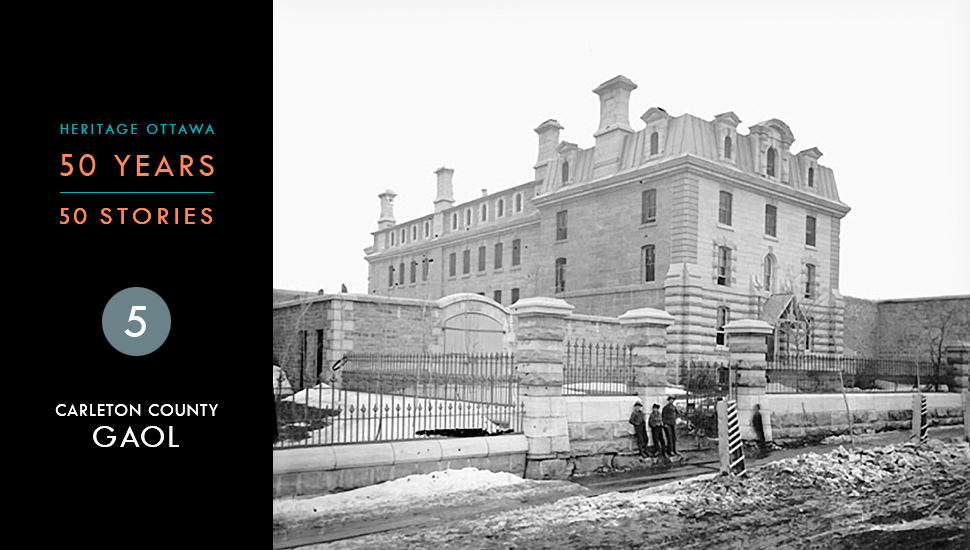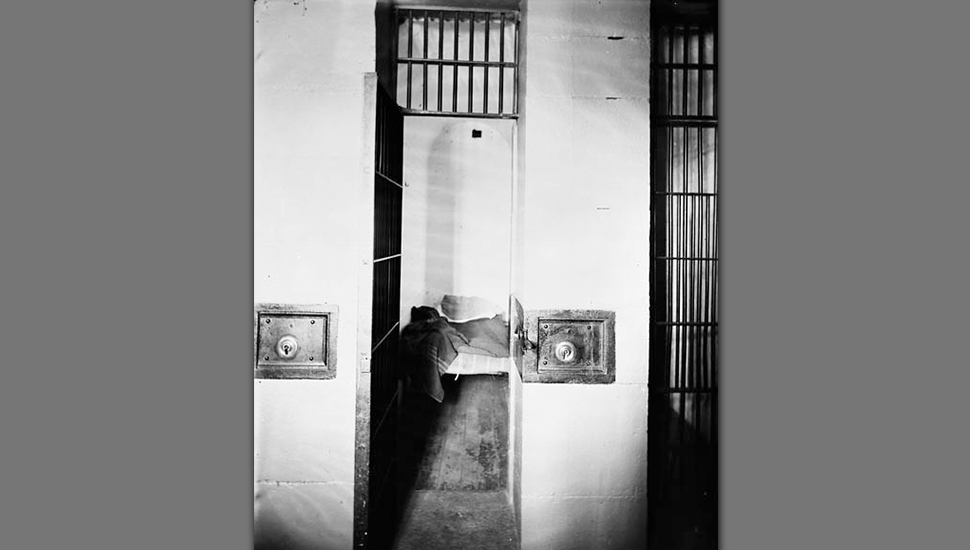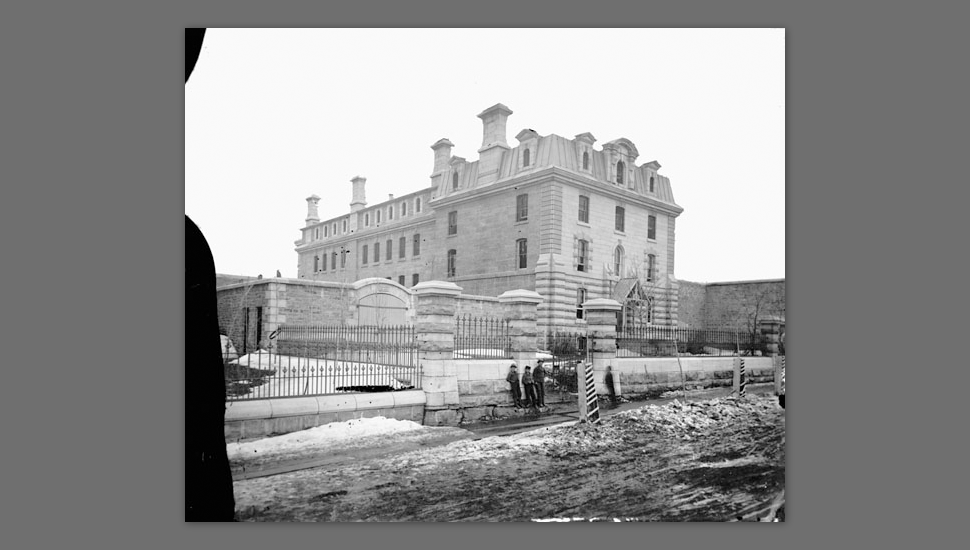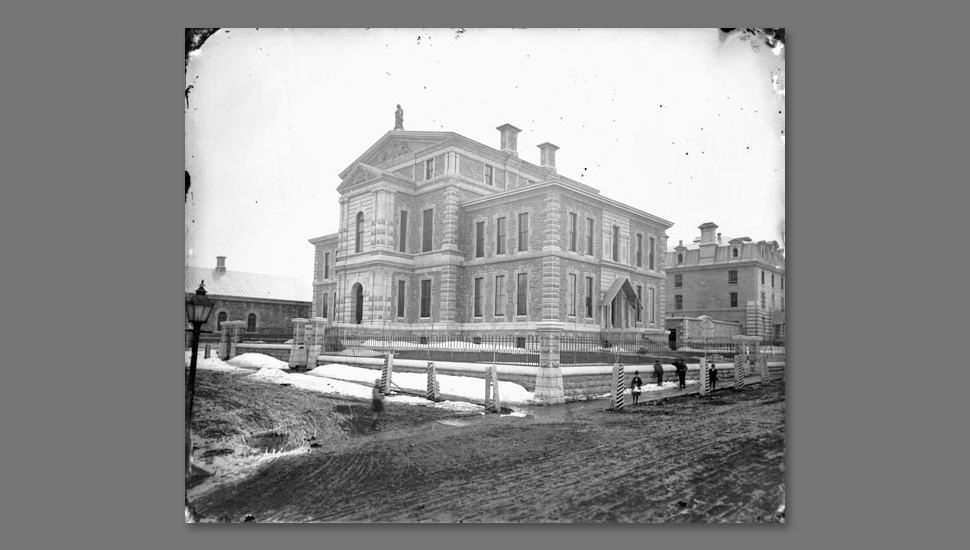5. Carleton County Gaol
Constructed: 1860 - 1862
Architect: Henry Hodge Horsey
Location: 75 - 77 Nicholas Street, Ottawa
A solid stone structure signifying strength and austerity, the Carleton County Gaol was considered a “spacious, airy building” when it first opened in 1862, replacing “the wretched and poisonous basement” nearby which had served as Ottawa’s first gaol for 20 years.
Designed by Kingston, Ontario architect Henry Hodge Horsey, the new Gaol conveyed its intent of imposing punishment and deterring crime while reflecting 19th-century principles of prison reform which sought to rehabilitate prisoners while providing safe housing. Men and women, young and old, accused and convicted were all ideally kept apart. Inmates who might pose a danger were segregated elsewhere in the building.
Behind its massive walls, the Gaol adopted a simplified version of the Auburn Plan of prison design, named for the New York State Prison at Auburn, which had established a standard of individual prison cells, albeit tiny ones.
The cell block wing of the Carleton County Gaol is a 4-storey stone structure at the rear of the building, with a low pitch gabled roof. An underground tunnel led to the Carleton County Court House to the north.
A service yard on the north side of the building was surrounded by a 4.5-metre high stone wall. An exercise yard facing south and the gallows yard facing east were enclosed by a taller stone wall measuring 6-metres high.
Still visible above the wall are the doors to the gallows, which remain intact and fully functional. It was there, before a crowd of over 5,000 people, that Patrick Whelan was hanged on February 11, 1869 for the assassination of Thomas D’Arcy McGee.
By contrast the administration block fronting onto Nicholas Street, with its symmetrical 3-bay elevation, is a textbook example of Italianate design. Projecting from the mansard roof and above the elaborate main cornice, a large central dormer with side consoles supports a semi-circular pediment and two flanking dormers with architraves and raking pediments. This part of the building housed the apartments of the prison governor.
The building’s exterior facing is one of its character-defining elements. The front main-floor elevation and corner buttresses have a rusticated treatment with alternating courses of ashlar and rock-faced limestone, while the basement level has a v-joint rock-faced finish. In contrast, the ashlar masonry of the upper two floors has a smooth finish with a formal corner quoining. Complementing the principal elevation are two ornate end chimney stacks rising above the roof.
Inside, prison conditions were hardly exemplary. The imposing building’s tiny cells were uncomfortable and unsanitary, lacking heat, light, ventilation or plumbing.
In 1930, the Royal Commission on Public Welfare issued a provincial report harshly criticizing the inadequacies at the Carleton County Gaol and calling for its immediate replacement. Despite provincial pressure and growing public outrage against increasingly inhumane conditions, it was not until March 1970 that tenders were called for a new Carleton Regional Detention Centre to be located in Blackburn Hamlet.
The Gaol’s impending closure prompted the Heritage Committee of A Capital for Canadians (forerunner of Heritage Ottawa) to organize a series of public seminars at Algonquin College focusing on Ottawa’s historic architecture, and the heritage value of threatened buildings such as the Gaol.
A resulting recommendation, accepted by the City of Ottawa in 1972, led to the Carleton County Gaol being leased to the Ottawa Youth Hostel Committee.
In 1978 the Carleton County Gaol was designated under the Ontario Heritage Act for its historical, architectural and contextual value.
R.A.J. (Bob) Phillips, chair of A Capital for Canadians, summarized the battle to save the Carleton County Gaol as follows in the December 1981 issue of Ottawa Magazine:
“It is hard to remember now that the dungeons on Nicholas Street were built as a model penal institution. The first notable public building to be constructed after the Parliament Buildings, the “GAOL” was, in a sense, a response to the writings of Charles Dickens who touched the public conscience about prison life… It had many famous guests and claims the last public hanging in Canada. ….
The fight to save the jail was spirited. The conservationists, with no power and hardly enough money to buy a postage stamp, went into their act against City Hall and the legal fraternity. … The rest is history. When Prince Philip officially opened the Canadian Youth Hostel in 1974… everyone said, of course, how farsighted it had been to save the jail, and how many hundreds of thousands of dollars it would have cost to build a new youth hostel.”
The former Carleton County Gaol currently operates as the Saintlo Hostels Association, offering twenty-first century visitors the chance to spend the night in an authentic jail cell.
UPDATE: This year the Ottawa Jail Hostel celebrates the 50th anniversary of its conversion into a Jail Hostel.





